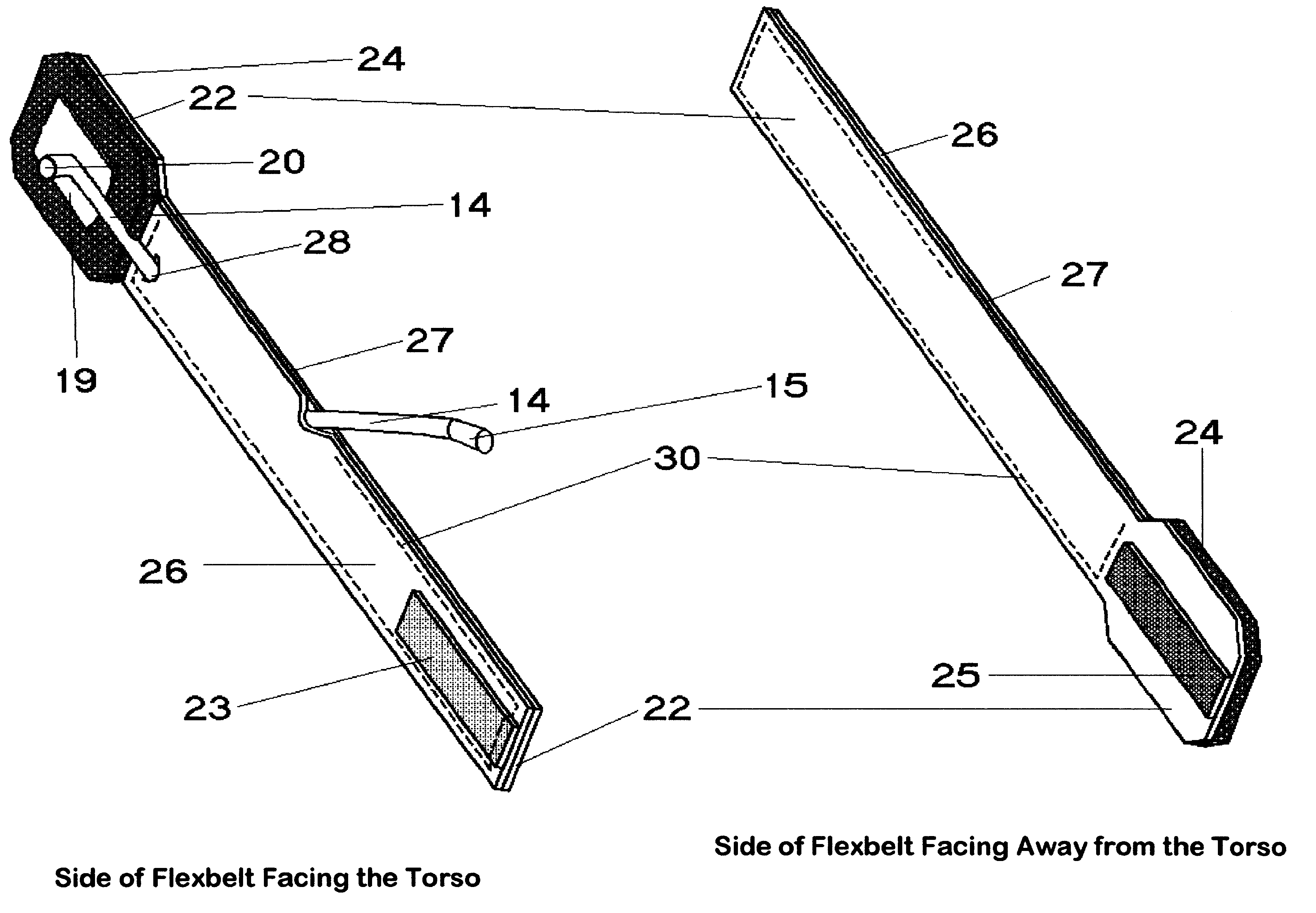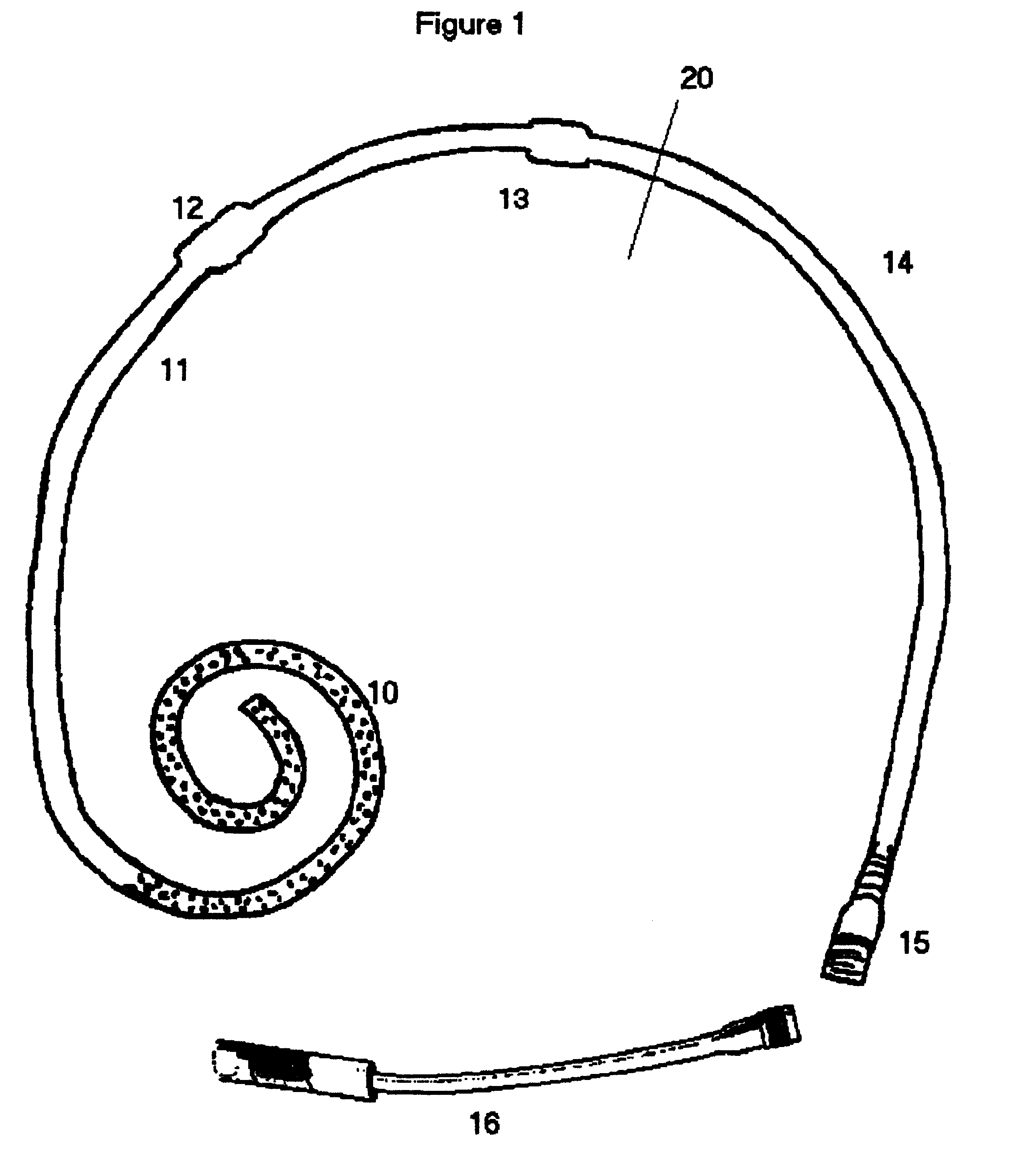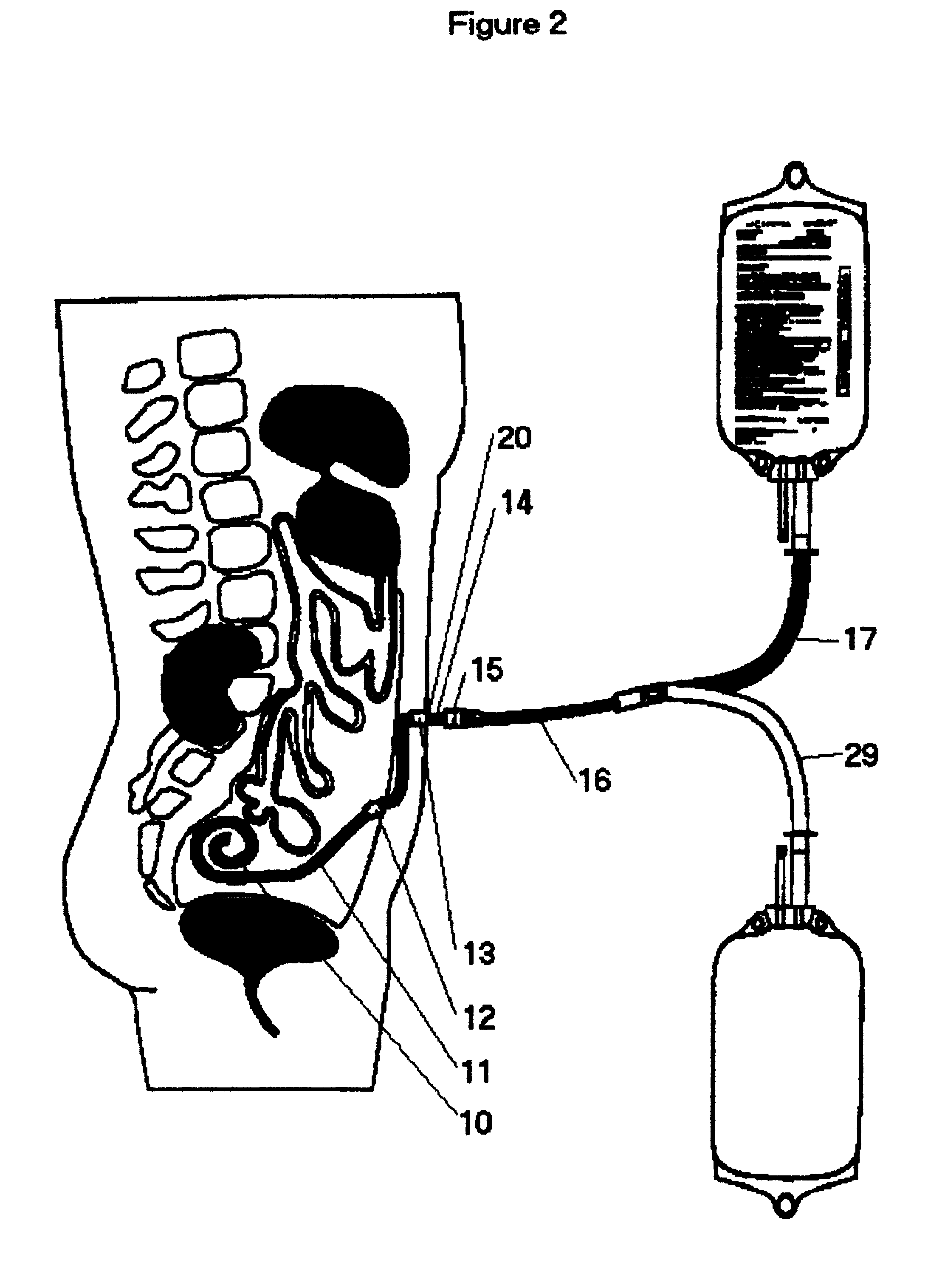Garment for securing and exposing a peritoneal dialysis catheter and catheter exit site
a technology for peritoneal dialysis and catheters, which is applied in the field of peritoneal dialysis catheters and catheter exit sites, and can solve the problems of time-consuming, difficult, irritating taping of patients performing dialysis,
- Summary
- Abstract
- Description
- Claims
- Application Information
AI Technical Summary
Problems solved by technology
Method used
Image
Examples
Embodiment Construction
As shown in FIG. 1 and FIG. 2, the peritoneal catheter consists of several parts 10, 11, 12, and 13, which are permanently inside the body, and a protrusion outside the body consisting of catheter tubing 14 and a titanium connector 15. During dialysis the connector 15 is connected to a transfer line 16, which is in turn connected to either a solution line 17 or a drain line 29, often via a cyclic machine (not pictured).
As depicted in FIG. 3, when the dialysis has been completed, the patient normally uses surgical tape 18 to tape replaceable sterilized gauze 19 over the exit site 20. The catheter protrusion's tubing 14 and connector 15 are also taped to the skin with surgical tape 21.
As depicted in FIG. 4, the invention consists of a strap 22 made from a durable slip-resistant material, and with hook-and-loop fasteners 23 and 25 at each end. Beneath the strap is attached a gauze covering 24 consisting of block of foam rubber sufficient in size to keep the catheter and the replaceable...
PUM
 Login to View More
Login to View More Abstract
Description
Claims
Application Information
 Login to View More
Login to View More - R&D
- Intellectual Property
- Life Sciences
- Materials
- Tech Scout
- Unparalleled Data Quality
- Higher Quality Content
- 60% Fewer Hallucinations
Browse by: Latest US Patents, China's latest patents, Technical Efficacy Thesaurus, Application Domain, Technology Topic, Popular Technical Reports.
© 2025 PatSnap. All rights reserved.Legal|Privacy policy|Modern Slavery Act Transparency Statement|Sitemap|About US| Contact US: help@patsnap.com



